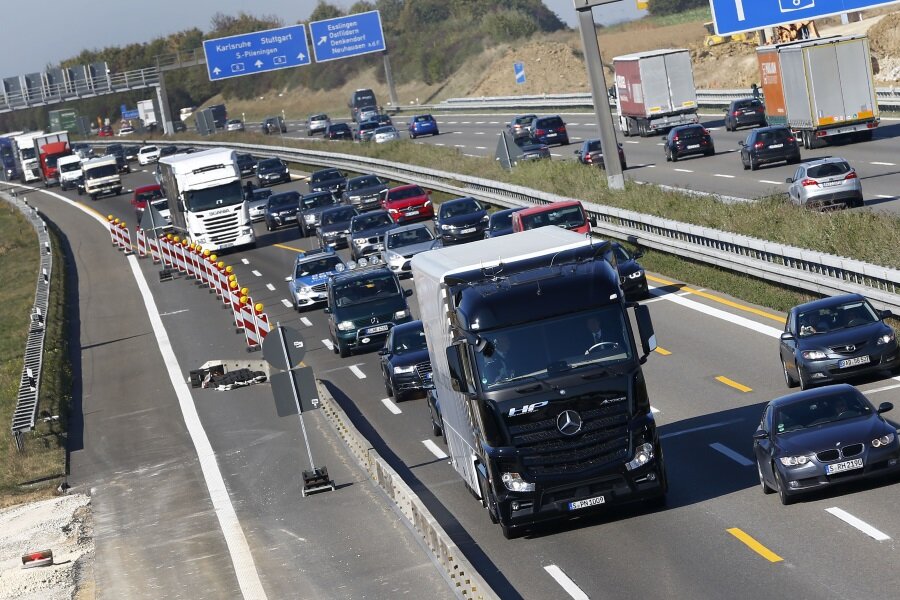Mercedes-Benz’s self-driving truck hits the open road
Loading...
Long-haul trucking jobs are tough: drivers have to spend days and days with very little company, stopping only every so often to eat, sleep, and refuel. Mercedes-Benz wants to change the industry with the introduction of a self-driving big rig, and last week it took a major step by introducing its autonomous truck onto public roadways in Germany.
The Mercedes-Benz Actros comes with a “Highway Autopilot” system that springs into action once a human driver guides the vehicle from a highway on ramp into the flow of traffic.
A “Highway Autopilot On” message alerts the driver that the Actros is ready to take over, and control is ceded to the truck with the push of a button. The Actros has radar and cameras to keep an eye on the road, and can stay within its own lane and adjust speed to match the flow of traffic.
Daimler AG, the parent company of Mercedes-Benz, says the Actros can handle stop-and-go traffic with no problem.
Daimler says the Highway Autopilot system isn’t meant to replace human jobs, nor to allow drivers to drift off while the truck does the work. The Actros will ask the driver to resume control of the vehicle if lane markings disappear, or if it detects poor weather conditions or an unusual obstacle. (If the driver doesn’t respond in time to something like a stopped vehicle ahead, though, the Actros will automatically stop itself.) The idea is that in the short term, Highway Pilot and other autonomous driving systems will make long-haul truckers’ jobs safer and easier by assuming some of their driving responsibilities.
In the future, autonomous vehicles could lead not only to huge decreases in driving accidents – Google, the creator of its own fleet of self-driving cars, often points out that 94 percent of all auto accidents are caused by human error – but also to more efficient traffic flows. Picture an automated traffic grid in which cars, networked to one another and keenly aware of the position of all other vehicles in the area at any given time, zip down the highway at full speed and smoothly merge into and out of the flow.
In the near future, however, autonomous vehicles such as the Actros have to be able to deal gracefully with unpredictable behavior from other cars. If someone cuts off the Actros or stops suddenly in front of it, the truck will apply hard braking to avoid a collision.
Daimler executives say the legal framework for self-driving vehicles isn’t in place yet in either Germany or the US, but that policymakers are generally on board, according to Business Insider. And if the trucking industry gets behind self-driving technology, that could help speed legislation through state and federal legislatures.
By 2020, and maybe sooner, self-driving trucks and cars are likely to be pretty common sight on public roads.








